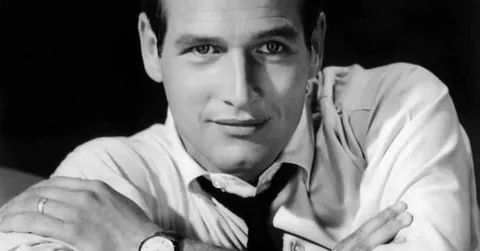Introduction
Paul Newman remains one of the most admired figures in American history, not only as an actor but also as a philanthropist, race car driver, and humanitarian. His career spanned over five decades, during which he starred in some of the most memorable films in Hollywood. Beyond the screen, Newman became known for his charitable efforts and commitment to social causes. His life story represents the rare blend of talent, humility, and generosity.
Early Life and Beginnings
Paul Leonard Newman was born on January 26, 1925, in Shaker Heights, Ohio. His father owned a sporting goods store, while his mother encouraged his artistic interests. Newman’s early exposure to theater began in childhood, and he showed a natural flair for performance.
After serving in the United States Navy during World War II, Newman pursued acting more seriously. He attended Kenyon College, studied drama at Yale University, and later enrolled in the Actors Studio in New York City. This training shaped his craft, giving him the skills and confidence to step into the world of professional acting.
Rise to Stardom
Paul Newman’s Hollywood career began in the 1950s. His first major breakthrough came with the film Somebody Up There Likes Me (1956), in which he portrayed boxer Rocky Graziano. This performance established him as a leading man with both charisma and emotional depth.
Throughout the 1960s and 1970s, Newman delivered some of his most iconic roles. Films like The Hustler (1961), Cool Hand Luke (1967), Butch Cassidy and the Sundance Kid (1969), and The Sting (1973) solidified his reputation as one of the greatest actors of his generation. His ability to portray rebellious, complex, and deeply human characters resonated with audiences across the globe.
Collaboration with Joanne Woodward
One of the most defining aspects of Newman’s life was his marriage to actress Joanne Woodward. The couple married in 1958 and remained together for five decades until his passing in 2008. Their partnership was rare in Hollywood, admired for its loyalty and love.
Woodward and Newman often worked together, both on stage and screen, supporting each other’s careers. Their relationship was not only a personal success story but also a professional one, showing that two artists could thrive together in an industry known for its challenges.
Beyond Acting: Directing and Racing
While acting brought him fame, Paul Newman also explored other passions. He directed several films, including Rachel, Rachel (1968), which starred Joanne Woodward and earned critical acclaim.
In addition, Newman pursued professional auto racing, a passion that began while filming Winning in 1969. He competed in numerous races, achieving respect as a skilled driver and team owner. His racing career proved that his talents extended far beyond Hollywood.
Philanthropy and Social Impact
Perhaps the most enduring part of Newman’s legacy is his philanthropy. In 1982, he founded Newman’s Own, a food company that donates 100 percent of its profits to charity. What began with a simple salad dressing recipe grew into a global brand that has contributed hundreds of millions of dollars to educational, health, and social programs.
Newman also established the Hole in the Wall Gang Camp, a camp for children with serious illnesses, giving them joy and hope in difficult times. His belief in using fame and fortune for the greater good set an example for future generations of celebrities.
Awards and Recognition
Over his lifetime, Paul Newman received numerous awards and honors. He won an Academy Award for Best Actor for The Color of Money (1986) after several nominations throughout his career. He also received Golden Globes, Emmy Awards, and recognition from humanitarian organizations. These honors reflect both his artistic achievements and his humanitarian contributions.
Legacy
Paul Newman’s legacy is multi-dimensional. As an actor, he created unforgettable characters that continue to inspire new audiences. As a philanthropist, he transformed his success into meaningful action, proving that wealth and fame can be tools for positive change. As a husband and father, he demonstrated loyalty, humility, and compassion.
Even after his passing in 2008, Newman’s influence remains strong. His films are considered classics, and his charitable work continues to support communities worldwide. His life stands as a reminder that greatness is not only measured by professional success but also by the impact one leaves on others.
Conclusion
Paul Newman was more than a Hollywood star. He was a man who lived with purpose, using his talents and resources to create lasting change. His career on screen made him a legend, while his work off-screen made him a hero. Paul Newman’s story will always be remembered as a shining example of how one individual can touch lives through art, love, and generosity.













Comments are closed